It took an 1852 memoir of a California traveler to alert me to the fascinating and spectacular geological formation known as Natural Bridges in Vallecito, California. J. D. Borthwick wrote about his hike up to this curious spot on Coyote Creek above the Stanislaus River. Upon his arrival he was in awe of the natural beauty presented to him. Borthwick’s account of the natural wonder dubbed Natural Bridges prompted me to visit the location as well.
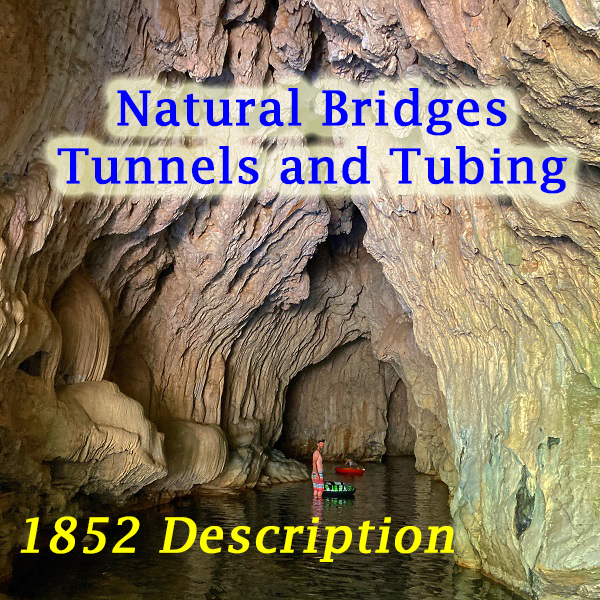
Geological Wonder of Natural Bridges’ Tunnels
As Borthwick points out, Natural Bridges is not a bridge, but a series of tunnels. The term bridge may have been applied because Coyote Creek flows through the tunnel allowing a person to walk across the roof of the tunnel without touching creek water. It is the deep pools of water inside the tunnels, supplied by the creek and natural seepage, combined with the dramatic speleothems that make Natural Bridges so awe inspiring.
As Natural Bridges is so close to the Calaveras Moaning Caverns, the geology and formation of the drapery, shields, and columns is most likely similar. Water flowed through the rock into the cave or tunnel and dripped from ceiling to floor. The calcium carbonate in the water precipitates out as the water evaporates leaving behind the calcareous speleothem formations of stalagmites, stalactites, drapery, shields, columns and other formations.
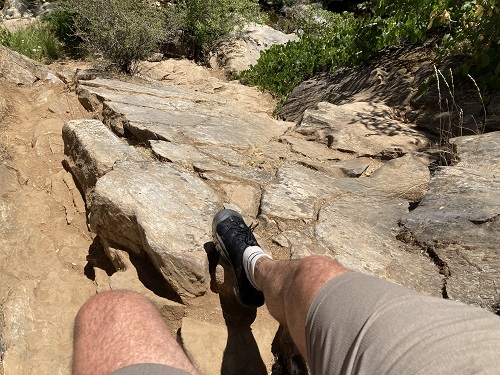
The hike down to Natural Bridges is no where near as arduous of that of Borthwick’s in 1852. However, because the canyon is south facing, it can get real hot, real fast. I thought the water would be shallow enough to walk through the tunnel. The water is deep enough to float inner tubes through the upper tunnel. As I was uncertain of the depth, I only ventured in ankle deep into Coyote Creek.
From the main exit, where the main trail ends, I walked the short distance to the entrance or opening where Coyote Creek enters. The entrance is more spectacular than the exit. The exit opening is around eight feet in height. The entrance is at least 30 feet and the interior soars even higher. It is this section that most resembles a gothic cathedral. At the entrance, there are several large bedrock mortars, six inches in width and depth that indicate Native Americans were present long before the Europeans arrived.
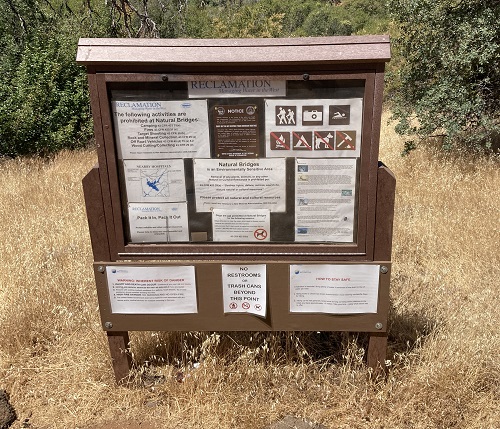
The canyon and site of Natural Bridges is owned and managed by the Bureau of Reclamation, who also operate New Melones Dam and Lake. Consequently, the intriguing geological formations has bare minimum amenities. There is a small road for parking and pit toilets next to Parrots Ferry Road.
On my visit, there was no sign indicating the location of the entrance to the park site. Beyond the main trail, nothing is marked. I got stuck on the north eastern entrance side after climbing down the steep canyon wall. Unable to find the trail on the southside of Natural Bridge, I plowed through the weeds and poison oak up to Parrots Ferry Road and walked back to the car. Next time I go, I will be taking an inflatable inner tube so I can float through the tunnel and get more pictures.
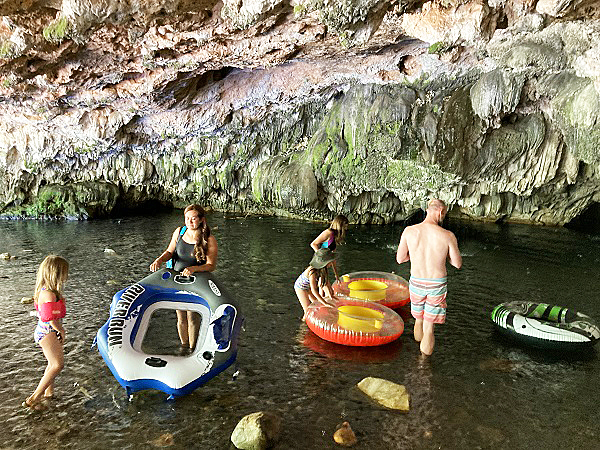
Borthwick, a native of Scotland, does an admirable job of describing Natural Bridges and inserting his displeasure with the Yankees (Americans) inclination to always view everything through a lens of money.
3 Years In California
by J. D. Borthwick, Oakland Biobooks California, 1948; Chapter 25, page 292
Accordingly, returning to M’Lean Ferry on the Stanislaus, at the point where Coyote Creek joins that river, I travelled up the Creek for some miles, clambering over rocks and winding round steep overhanging banks, by a trail so little used that it was hardly discernible. I was amply repaid for my trouble, however, when, after an hour or two of hard climbing in the roasting hot sun, I at last reached the bridges, and found them much more beautiful natural curiosities than I had imagined.
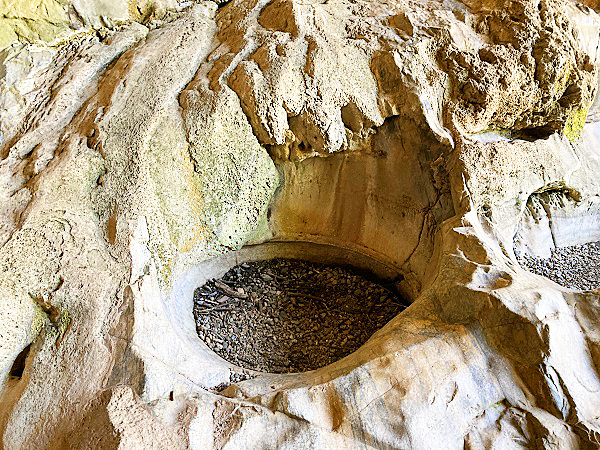
Having never been able to get any very intelligible account of what they really were, I had supposed that some large rocks rolling down the mountain had got jammed over the creek, by the steepness of the rocky banks on each side, which I fancied would be a very easy mode of building a natural bridge. My idea, however, was very far from the reality. In fact, bridges was an inappropriate name; they should rather have been called caves or tunnels. How they were formed is a question for geologists; but their appearance gave the idea that there had been a sort of landslip, which blocked up the bed of the creek for a distance of two or three hundred feet, and to the height of fifty or sixty above the bed of the stream. They were about a quarter of a mile apart, and their surface was, like that of the hills, perfectly smooth, and covered with grass and flowers.
The interiors were somewhat the same style of place, but the upper one was the larger and more curious of the two. The faces of the tunnel were perpendicular, presenting an entrance like a church door, about twelve feet high, surrounded by huge stoney fungus-like excrescences, of a dark purple-and-green colour. The waters of the creek flowed in here, and occupied all the width of the entrance. They were only a few inches in depth, and gave a perfect reflection of the whole of the interior, which was a lofty chamber some hundred feet in length, the straight sides of which met at the top in the form of a Gothic arch.
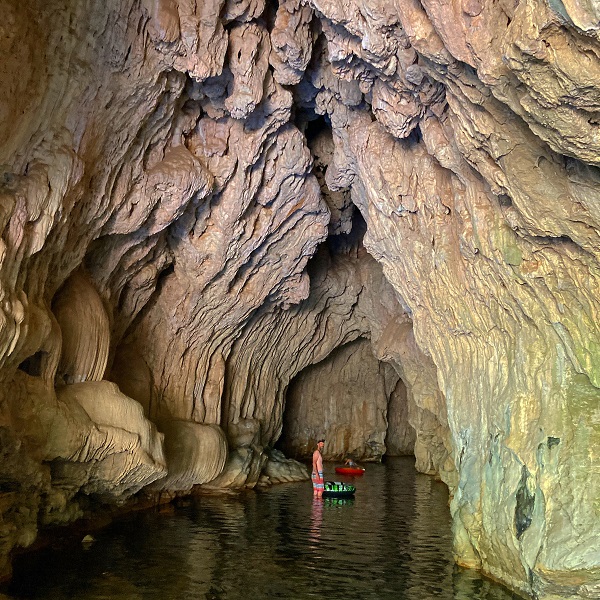
At the further end was a vista of similarly arched small passages, branching off into darkness. The walls were deeply carved into pillars and grotesque forms, in which one could trace all manner of fanciful resemblances; while at the base of some of the columns were most symmetrically-formed projections, many of which might be taken for fonts, the top of them being a circular basin containing water. These projections were of stone, and had the appearance of having congealed suddenly while in a boiling state.
There was a beautiful regularity in the roughness of their surface, some of the rounded forms being deeply carved with circular lines, similar to the engine-turning on the back of a watch, and others being rippled like a shirt of mail, the rippling getting gradually and regularly finer, till at the top the surface was hardly more rough than that of a file.
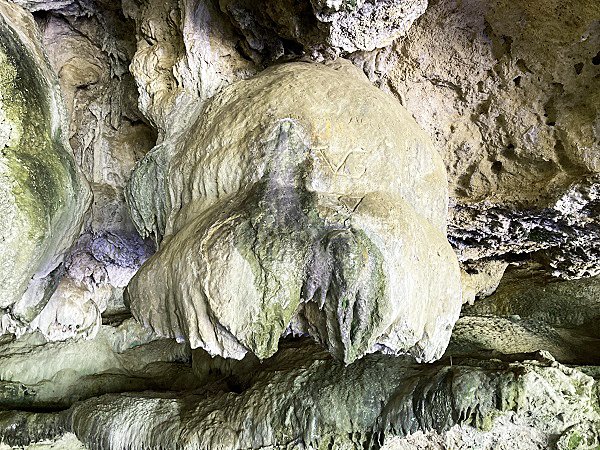
The walls and roof seemed to have been smothered over with some stuff which had hardened into a sort of cement, presenting a polished surface of bright cream-colour, tinged here and there with pink and pale-green. The entrance was sufficiently large to light up the whole place, which, from its general outline, gave somewhat the idea of a church; for, besides the pillars, with their flowery ornaments, the Gothic arches and the fonts, there was at one side, near the entrance, one of those stone excrescences much larger than the others, and which would have passed for a pulpit, overhung as it was by a projection of a similar nature, spreading out from the wall several feet above it.
The sides of the arches forming the roof did not quite meet at the top, but looked like crests of two immense foaming waves, between which were seen the extremities of numbers of pendants of a like flower form.
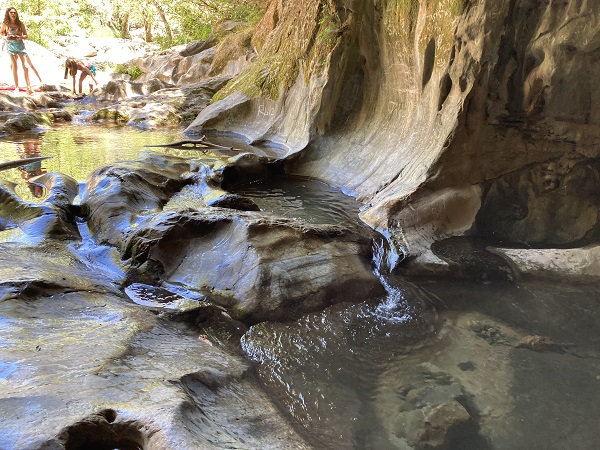
There was nothing rough or uncertain about the place; every part seemed as if it were elaborately finished, and in strict harmony with the whole; and as the rays of the setting sun fell on the water with the entrance, and reflected a subdued light over the brilliant hues of the interior, it looked like a gorgeous temple, which no art could improve, and such as no human imagination could have designed. As the other end of the tunnel the water emerged from a much small cave, and which was so low as not to admit of a man crawling in.
The caves, at each end of the other tunnel, were also very small, though the architecture was of the same flowery style. The face of it, however, were extremely beautiful. To the height of fifty or sixty feet they presented a succession of irregular overhanging projections, bulging out like immense mushrooms, of which the prevailing hue was a delicate pink, with occasional patch of bright green.
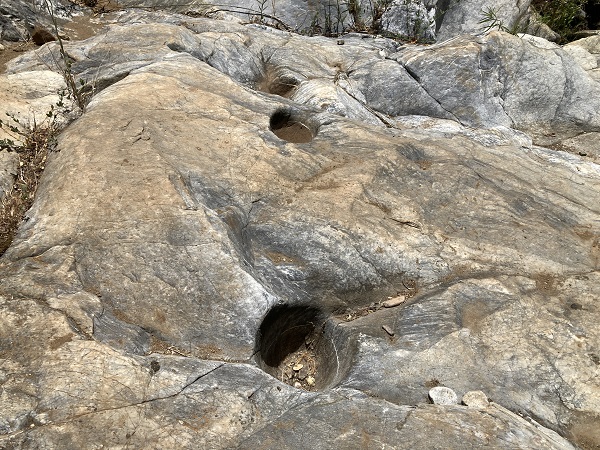
In any part of the Old World such a place would be the object of a pilgrimage; and even where it was it attracted many visitors, numbers of whom had, according to the established custom of snobhood, acknowledged their own insignificance, and had sought a little immortality for their wretched names by scratching them on a large smooth surface by the side of the entrance to the cave.
While I was there, an old Yankee miner came to see the place. He paid a very hurried visit – he had not even time to scratch his initials, but he was enthusiastic in his admiration of the beautiful object of nature, which, however, he thought was quite thrown away in such an out-of-the-way part of creation. It distressed him to think that such a valuable piece of property could not be turned to any profitable account. “Now,” said he, “if I had this here thing jist about ten miles from New York City, I’d show it to the folks at twenty-five cents a-head, and make an ever lastin’ pile of money out of it.
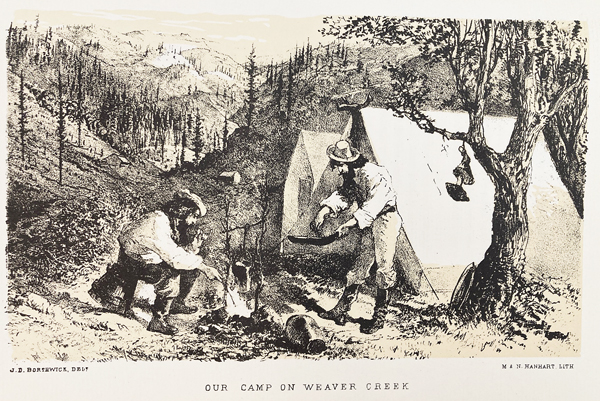
My YouTube video does a better job of displaying the dripping water wonder of Natural Bridges.


